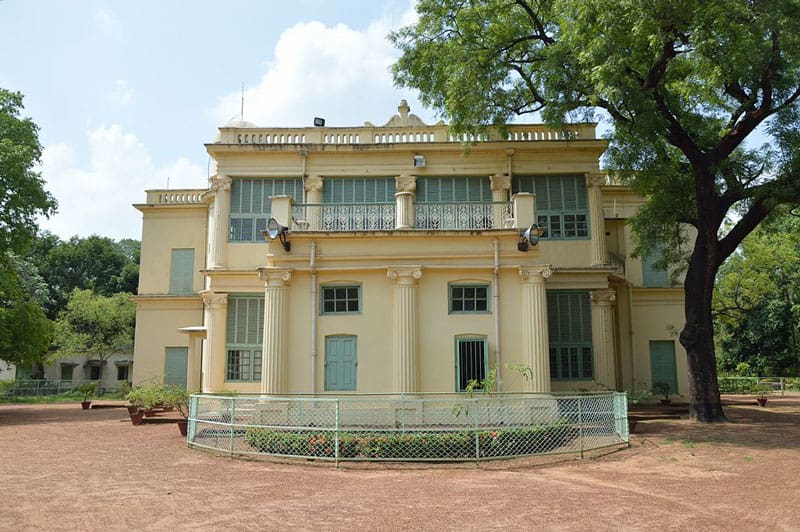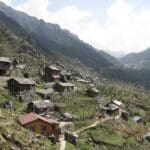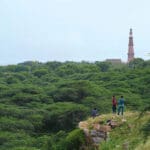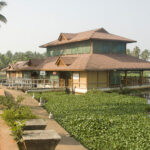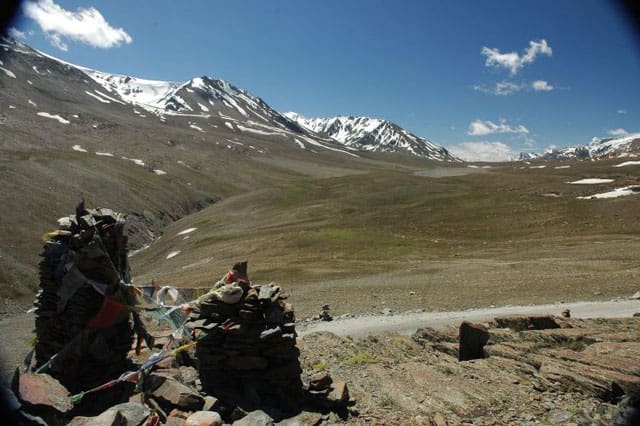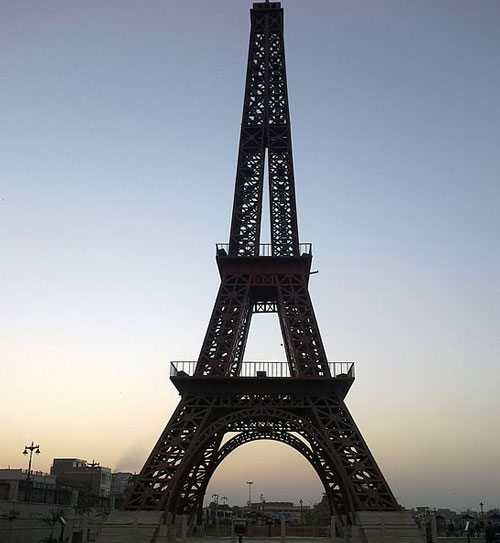Shantiniketan, the Abode of Peace, is more than just a picturesque town in West Bengal—it’s a cultural legend, an intellectual retreat, and a living museum of Bengal’s greatest minds. In this thoroughly expanded guide, we journey deep into the top 5 places to visit in Shantiniketan, unwrapping their stories, secrets, and the rich experiences awaiting every traveler. Shantiniketan is a place where art, learning, and nature exist in seamless synergy, and this extensive resource ensures you explore every nuance.
Introduction to Shantiniketan: Bengal’s Creative Heartbeat
Shantiniketan was initially envisioned by Debendranath Tagore as a spiritual center, but it was his son, Rabindranath Tagore, who transformed it into a global icon of education, art, and humanism. Here, immense sal and sonajhuri trees provide natural canopies for study, and every pathway seems to echo the poetry, music, and ideals of Tagore himself. Today, Shantiniketan stands not only as a tourist destination but as a living embodiment of Bengal’s cultural renaissance—where tradition harmoniously meets the avant-garde.
-
Location: Bolpur, Birbhum district, West Bengal, approximately 160km from Kolkata.
-
Founded: 1863 (as an ashram), with the university beginning in 1921.
-
Famous for: Visva-Bharati University, vibrant fairs, open-air classes, rural crafts, and Tagore’s enduring legacy.
1. Visva-Bharati University: The Soul of Shantiniketan
Overview and History
Visva-Bharati University is not just an academic institution; it’s a movement. Established by Rabindranath Tagore in 1921, driven by his vision of world harmony and holistic development, the campus blends Indian and global knowledge traditions.
-
Vision: “Where the world makes a home in a single nest.”
-
Campuses: Patha Bhavana (school), Kala Bhavana (fine arts), Sangit Bhavana (music and dance), Cheena Bhavana (Chinese studies), Vidya Bhavana (humanities), and more.
-
Legacy: Alumni include Nobel laureates, renowned artists, national awardees, and global change-makers.
Architectural Marvels and Campus Culture
-
Kala Bhavana: Not just a hub for budding artists—its walls, open courts, and sculptures emerge as galleries by themselves. Unique terracotta and stonework, experiments in weaving and printing, and outdoor workshops typify this space.
-
Sangeet Bhavana: The musical heart where Rabindra Sangeet comes alive with seasonal festivals, dance dramas, and public performances.
-
Patha Bhavana: Envisioned as the perfect classroom under natural light, circular clusters of students learning under trees are an everyday sight.
-
Uttarayan Complex: A series of architecture experiments by Tagore, these houses reflect his love for minimalism, nature, and indigenous materials. Udayan, Shyamali, Konarak, and others each have distinct designs—mud, glass, brick, and wood in poetic interplay.
Daily Life and Visitor Experience
-
Morning Parikrama: Join students and faculty as they chant Tagore’s songs and hike around the ashram during sunrise.
-
Art on Display: Witness processions of painted scrolls, else stop by student exhibitions of batik, pottery, or sculpture during festive seasons.
-
Global Dialogues: Engage in seminars, watch classical performances, or attend readings that often attract visiting scholars from around the world.
When to Visit
-
Convocation and Basanta Utsav: The campus glows with festivities—colorful processions, music, and open-air events.
2. Tagore’s Ashram: Reliving the Genius’ Imprint
What Makes the Ashram Unique?
Tagore’s Ashram is the nucleus of Shantiniketan, where Rabindranath Tagore lived and nurtured his vision. Set amidst tranquil gardens and tree-shaded courtyards, the complex consists of several historic houses—each with its own character.
-
Udayan: Tagore’s final residence, noted for its blend of East Asian and modernist architecture. Its open terraces look over sun-dappled gardens.
-
Konarak: Built for Tagore’s son Rathindranath, famed for its fusion of glass, brick, and open forms. Now houses rare memorabilia.
-
Shyamali: This “mud house” is an experiment in sustainability, with poems inscribed on the walls, and an inviting, earthy atmosphere.
-
Prayer Hall (Upasana Griha): Built in 1863 with shining Belgian glass and marble, it’s the setting for daily prayers and quiet meditation.
What to See and Do
-
Tagore’s Living Spaces: Step into rooms preserved as they were, including his writing desk, musical instruments, furniture, and art collections.
-
Artifacts and Exhibitions: View medals, personal correspondence, handwritten manuscripts, original paintings, and rare photographs.
-
Guided Tours: Local guides narrate fascinating anecdotes about Tagore’s family, guests (from Mahatma Gandhi to foreign dignitaries), and key moments in Indian history shaped here.
The Tagore Touch
-
Daily Prayer: Even today, evening prayers are held under moonlight, with Tagore’s verses sung in unison—a deeply moving, communal affair.
-
Festivals: Tagore Jayanti and other events are observed with recitals, dance, and art installations at the ashram.
3. Ballavpur Wildlife Sanctuary: Into Shantiniketan’s Wild Heart
Discover Bengal’s Untamed Beauty
Commonly known as Deer Park, Ballavpur Wildlife Sanctuary offers a fascinating contrast to Shantiniketan’s intellectual landscape. Created in 1977, the park is an ecological haven.
-
Location: South-east of Visva-Bharati campus.
-
Area: Covers approximately 700 acres dotted with waterbodies and teak plantations.
Flora and Fauna
-
Wild Residents: Blackbucks, spotted deer (chital), foxes, jackals, and porcupines roam freely. It’s also habitat for monitor lizards, turtles, and butterflies.
-
Avian Paradise: Bird lovers can spot Indian rollers, green bee-eaters, parakeets, owls, woodpeckers, and kingfishers, especially at dawn.
-
Natural Trails: Walk or cycle through marked trails, listening to the forest’s voice punctuated by bird calls and rustling leaves.
Visitor Info
-
Best Season: October to March, when migratory birds arrive and foliage is lush.
-
Entry: Nominal fee. Guides recommended for deeper exploration.
-
Photography: Early mornings offer magical, misty light and greater wildlife activity.
Why It’s Special
Shantiniketan’s wild spaces aren’t just ‘tourist spots’; they’re ecosystems carefully preserved by locals. The sanctuary also doubles as an outdoor classroom for Visva-Bharati students studying the natural sciences and environmental studies.
4. Sonajhuri Haat: Marketplace Amidst Whispering Trees
A Rustic Bazaar Like No Other
Hidden within groves of golden Sonajhuri trees, Sonajhuri Haat (also called Khowai or Khoai Mela) is a weekly open-air market held on Saturdays and Sundays. Artisans, mostly from the Santali and tribal communities, gather to sell their wares beneath rustling canopies.
-
What You’ll Find:
-
Dokra jewelry (lost-wax brass craft)
-
Terracotta idols and plates
-
Hand-painted scrolls (patachitra)
-
Shantiniketani leatherwork—bags, shoes, wallets
-
Kantha embroidery saris and stoles
-
Bamboo flutes, tribal drums, and hand-woven baskets
-
-
Cultural Performances: Baul singers in saffron robes and anklets weave through the crowd, playing their ektaras and mesmerizing visitors with songs of devotion and longing.
Experience the Bazaar
-
Shopping Tips: Bargain respectfully, interact with artisans, and ask about a craft’s origins.
-
Food Stalls: Sample local snacks—moa (puffed rice sweet), puchka (pani puri), homemade sandesh and jhal muri (spicy puffed rice).
-
Atmosphere: The haat is infused with laughter, music, chatter, and the scent of sheuli flowers drifting on the breeze.
Why Sonajhuri Haat is Essential
The market is a grassroots celebration of rural enterprise, creativity, and social unity. It uplifts local economies, especially for tribal women who carry their artistry forward between generations.
5. Rabindra Bhavana Museum: The Archive of Greatness
India’s Richest Tagore Collection
Within the university campus, Rabindra Bhavana Museum houses one of India’s most renowned literary archives—a repository of Rabindranath Tagore’s manuscripts, letters, artwork, and personal memorabilia.
-
Established: 1942, after Tagore’s death, to preserve and present his multifaceted oeuvre.
-
Collections:
-
Over 40,000 manuscripts and letters (including Nobel Prize documents)
-
Rare first editions, translations, and unpublished works
-
Paintings and sketches by Tagore and his contemporaries
-
Personal effects—robes, spectacles, Nobel medallion
-
Historical photographs chronicling Tagore’s travels
-
Visitor Experience
-
Galleries: Well-arranged, with English and Bengali displays. Audio guides are sometimes available.
-
Events: Host book launches, exhibitions, scholarly lectures, workshops, and international conferences.
-
Library Access: For scholars and researchers, the museum’s reading room is invaluable.
Tagore’s Nobel Prize Story
The museum preserves the site and memory of Tagore’s Nobel Prize medal (which was sadly stolen in 2004, but replacements were provided by the Swedish Academy and Indian Government). His acknowledgment speech and translated works are key highlights.
Hidden Gems: Beyond the Classics
While the top 5 places to visit in Shantiniketan capture the essential experience, immerse in these hidden treasures for a holistic visit:
-
Kopai River and Amar Kutir: The river immortalized in Tagore’s poetry is now bordered by quiet picnic spots. Amar Kutir, a unique rural craft society, lets you watch master weavers at work and buy ethical handlooms.
-
Prantik and Shyambati: Neighboring hamlets with quaint lakes, flowering trees, and folk murals.
-
China Bhavana and Nippon Bhavana: Celebrations of Tagore’s ties with China and Japan—see rare collaborative art, photographs, and events annually.
Immersing in Shantiniketan’s Culture: Rituals and Festivals
Poush Mela: The Quintessential Bengal Fair
Celebrated in late December, Poush Mela is Shantiniketan’s grand winter festival. The entire campus and adjoining fields transform into a spectacle—the air scented with incense, floral garlands, and the beat of folk drums.
-
Highlights: Tribal dances, Bengali drama, Baul and Kirtan song contests, traditional sweet stalls, art fairs, and parades by Visva-Bharati students.
-
Tips: Arrive early for the inauguration ceremony; sample local sweets like patishapta and payesh.
Basanta Utsav: Shantiniketan Holi
Initiated by Tagore himself, Basanta Utsav marks spring’s arrival with color, music, and dance. Unlike elsewhere, Holi here is celebrated with elegant yellow attire, group recitals of Tagore’s songs, and dignified smearing of abir (colored powder).
-
Unique Experience: Watch students perform Rabindra-nritya (creative dance), participate in poetry sessions, and buy souvenirs only sold during the festival.
Essential Visitor Information
How to Get There
-
By Train: Bolpur-Shantiniketan station is well connected to Kolkata’s Howrah and Sealdah stations; popular trains include Shantiniketan Express and Visva-Bharati Fast Passenger.
-
By Road: Frequent buses and private taxis from Kolkata, Durgapur, and Dhanbad are available.
-
By Air: The nearest airport is NSCBI Airport (Dumdum, Kolkata), 2.5-3 hours away by road.
Getting Around
-
Local Transport: Colorful cycle rickshaws, e-rickshaws, and rental bicycles. Walking is ideal for inner lanes and campus.
-
Communication: Bengali is the main tongue, but Hindi and English are understood by many. Local guides and students often converse fluently in English.
Where to Stay
-
Ecotourist Lodges: Stay in cozy cottages surrounded by greenery.
-
Heritage Homes: Several Tagore-era family mansions have been converted into guesthouses.
-
Budget Hotels: Clustered near the railway station; book ahead during festival season.
Food & Craft: The Flavors and Colors of Shantiniketan
Culinary Must-Haves
-
Bengali Delights: Enjoy fish preparations (Shorshe Ilish, Rui Kalia), rice and lentils, mocha (banana flower curry), and desserts like mishti doi and sandesh.
-
Street Food: Try hot jhal muri, singara (samosa), puchkas, and seasonal fruit.
-
Cafés and Bakeries: Quaint eateries near the university serve artisanal cakes, Bengali fusion platters, and locally brewed teas.
Shopping Inspirations
-
Leather Artifacts: Distinctive to Shantiniketan, these items are durable, beautifully painted, and ethically sourced.
-
Kantha Stitch: Intricate embroidery on saris, dupattas, and cushion covers, crafted by local women.
-
Dokra Craft: Tribal artisans sculpt mind-blowing brass figurines using ancient techniques.
The Soul of Shantiniketan: Living the Experience
More than a destination, Shantiniketan is a philosophy of life. Pause under a Chhatim tree with a notebook in hand; witness the sunrise at Kopai; lose yourself in folk ballads under a full moon. This is not a place for hurried sightseeing but thoughtful exploration—where learning, beauty, and peace flow together.
Frequently Asked Questions (15 FAQ’s) About Visiting Shantiniketan
1. What is the best season for visiting Shantiniketan?
October to March is most pleasant for sightseeing and festivals.
2. How accessible is Shantiniketan from Kolkata?
It’s a 2.5- to 3-hour train or road journey; frequent trains and buses are available.
3. Is campus entry free at Visva-Bharati?
Generally yes, though museums and certain houses have nominal entry fees, and special events might require passes.
4. Are there English-speaking guides available?
Yes, especially near university gates, museums, and through many hotels.
5. What local handicrafts should I buy?
Shantiniketan leather bags, kantha-stitched textiles, dokra figurines, and batik prints.
6. Is wildlife spotting easy at Ballavpur Sanctuary?
Visit early mornings; deer sightings are common, while birdwatching is superb year-round.
7. Are there ATMs and digital pay facilities?
There are ATMs in Bolpur, but many market stalls prefer cash or UPI.
8. What are the notable festivals here?
Poush Mela, Basanta Utsav, Tagore Jayanti, and Rabindra Jayanti are best known.
9. Is Shantiniketan solo-travel friendly?
Yes, it’s considered safe and welcoming for solo visitors, including women travelers.
10. Are vegan and vegetarian food options available?
Yes—sprawling Bengali veg platters, salads, and vegan-friendly fare at university cafés.
11. Can I cycle around Shantiniketan?
Yes; bicycle rentals and guided cycling tours are available.
12. Are hotels pet-friendly?
Few heritage homestays allow pets. Check while booking.
13. How to participate in campus events or classes?
Look for public event banners or inquire in advance at the Visva-Bharati office.
14. Are photography and videography allowed?
Yes, in outdoor spaces. Restricted inside museums and private buildings.
15. Are accommodations available during Poush Mela/Basanta Utsav?
Book early—rooms fill up months in advance for major festivals.


